Initially, LI-ION battery packs for long-range drones were homemade by hobbyists. They connected 4 or 6 cells serially to achieve the desired voltage. Sony VTC6 18650 batteries were used the most due to their excellent reliability. Panasonic and Samsung LI-ION proved to perform well also. In this review, we will have a closer look at the CNHL LI-ION 4S 3200mAh pack.
The biggest advantage of using Li-Ion cells over LiPo ones is that they have a higher capacity for the same weight. The CNHL LI-ION 4S 18650 3200mAh weighs only 204g, while a 4S 1800mAh LiPo has nearly the same weight. So theoretically, you should get close to double the flight time!
ChinaHobbyLine LI-ION 4S 3200mAh battery review
Disclosure: I received these batteries as part of a product review collaboration with China Hobby Line. Although the LI-ION packs were offered for free, all opinions in this article remain my own, and I was in no way influenced by the sponsor.
Upon my request, they sent me three LI-ION 4S 3200mAh packs. When I review drone batteries, I like to have more than one to compare if they perform the same. The packs came in a not-too-fancy black box. To protect the batteries, they were additionally wrapped in a bubble sheet.
The 4S LIION pack measures about 36x36x68mm and weighs 204 grams. The “4S” number means that inside are four 18650 cells connected serially. The pack is double-wrapped in red and black nylon. On the front, there is a sticker that shows the basic parameters, and on the back, are some safety recommendations. It has a standard balance port and XT60 discharge connector. Overall, it feels solid and well-made.
Technical specifications
| Cell type | LI-ION 18650 DLG |
| Capacity | 3200mAh |
| Voltage | 14.8V / 4-Cell / 4S1P |
| Power | 47.36Wh |
| Discharge rate | 3C Continual / 6C Burst |
| Charge rate | 5C Max |
| Output connector | XT60 (AWG12 cable) |
| Balance connector | JST / XH |
| Size | 36X36X68mm |
| Weight | 204 grams |
Performance
Firstly I test it with my FlyFish-RC Volador 5″ racer quad with Flash 2306 motors and KM55A ESC. The total take-off weight is 691 grams. Despite being fully charged, the drone takes off at only 60% throttle and the cell voltage drops in just seconds from 4.18V to 3.5V. It looks like the 3C (burst 5C) is not enough for this heavy and powerful flying machine. To give it a second chance, I ordered an XT60 parallel adapter to try doubling the C-ratting by using two batteries at the same time.
Next, I test it with a much lighter 3″ CineWhoop with 439 grams take-off weight, including the battery. With this setup, I manage to fly but, at full throttle, still struggled to deliver the required power. To be able to fly without a constant low-voltage alarm, I had to change the trigger from 3.4V to 3V. When the motors are armed (idle speed), the drone requires 2A (33W). It absorbed 7A (114W) to rise from the ground and needed 16A (240W) to gain some speed. At continuous 15A usage, the battery voltage dropped from 16.2V to 13.8V, which is quite a lot.
In the best scenario, this pack could comfortably handle only an ultra-light 2.5″ Whoop, but these usually use XT30 connectors, not XT60.
Charging and real capacity
Typically, 18650 lithium-ion cells can be charged up to 4.2V and down to somewhere between 2V and 3V, depending on the technical specification for cut-off voltage. To be safe, never discharge lower than 2.7-2.9V. After you land in the rest state, you should go up to 3-3.2 volts. Always use a dedicated LI-ION charger to avoid damaging the battery or, even worse, catching fire.
To test the real capacity of the battery, firstly, I did five charging cycles, then discharge it to 3.1-V/cell and charge it back at 3.2A (1C). My ToolKitRc M9 smart charger allows me to charge LION batteries to 4.15V only. When the charging program was finished, the display showed 2670mAh. Probably, till 4.20V, you could squeeze another 100-200 mah, but the 3200mah is quite optimistic. To confirm my measurements result, I did another experiment by charging two 4s/1300mAh LIPO packs using a freshly charged CNHL LI-ION 4S 3200mAh, the end voltage was 3.05V/cell -which means that it was fully empty.
Pricing and availability
These 4S Long-Range LI-ION packs can be ordered with 26% off from the manufacturer’s website at just $16.99 during their Spring Meg sale. There is also an option for a 2500mAh version with a higher C-rating (10C Continual / 20C Burst) for $28.99 (with Samsung cells).
CNHL LI-ION 4S 3200mAh Long-Range battery: Who’s and What’s for?
Personally, I would not recommend these CNHL LI-ION 4S 3200mAh batteries for FPV drones. The 3C-6C (~10A-20A) is too little for the job. Instead, the packs are perfect for powering your FPV Goggles, FPV monitor, or Transmitter. They can be used as a portable power source for your pocket charger to refuel small 450-850mAh batteries right on the flight field. I also use it together with my SEQURE SQ-001 60W soldering iron.
Li-Ion versus Li-Po batteries: Which is better for FPV drones?
Li-Ion batteries, or lithium-ion batteries, use a chemical reaction between two electrodes—a positive, or anode, and a negative, or cathode—to store energy. Unlike first-generation rechargeable batteries, such as lead-acid, Li-ion batteries have a higher energy density and are capable of charging and discharging many thousands of times with very little degradation of their capacity over time. They are also much lighter and smaller than other types of rechargeable batteries, making them suitable for long-range drone flights (if they have at least 30C).
Li-Po batteries, or lithium polymer batteries, also consist of two electrodes and utilize a chemical reaction to store energy. They are composed of a solid polymer electrolyte, allowing for a more custom design. LI-PO batteries can be made in different shapes and sizes than Li-Ion batteries. LiPo packs have a much higher discharge rate than Li-ion, meaning you can get much higher current out of them. To give you an idea, a high-quality FPV LiPo typically has around 100C to 130C of continuous discharge rate, while Li-ion has only 3 to 30C.
Comparison Table
| LI-ION 3200mAh | LI-ION 2500mAh | LIPO 1300mA | LIPO 1800mA | |
| Size | 36X36X68mm | 36X36X68mm | 33.5X34X74mm | 38.5X34X86mm |
| Weight | 204g | 196g | 163g | 209g |
| C-rating | 3C Continual 6C Burst | 10C Continual 20C Burst | 100C Continual 200C Burst | 120C Continual 240C Burst |
| 3″ Whoop flight time | 17min | N/A | 8min | 10min |
| Price | $16.99 | $28.99 | $14.49 | $33.98 |

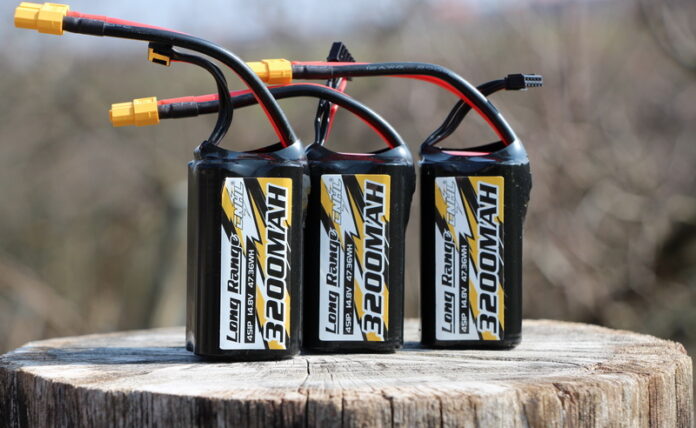
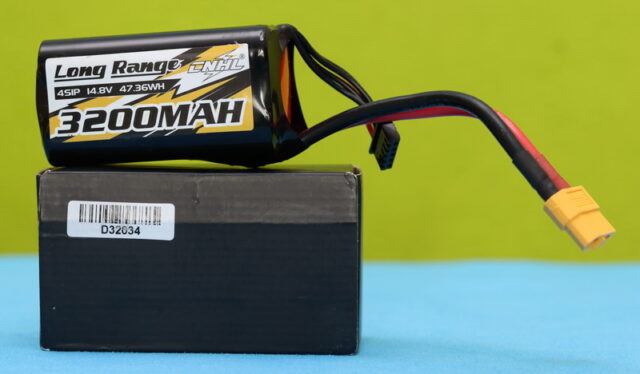

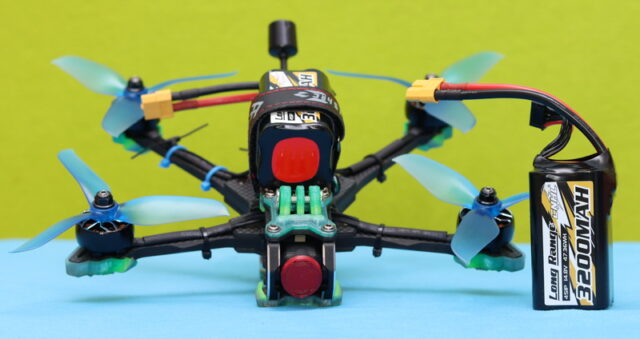
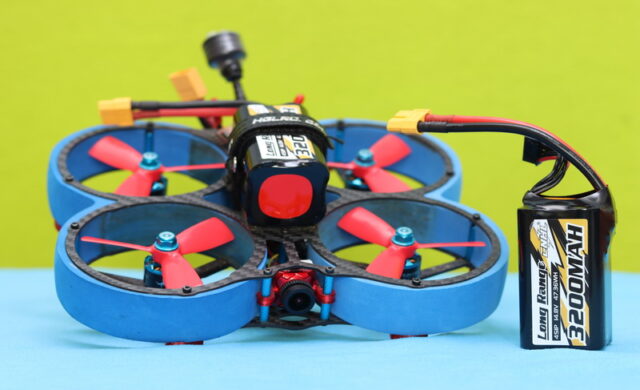
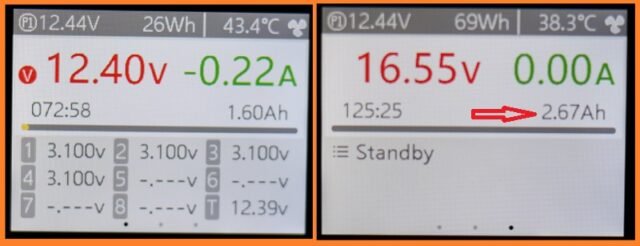
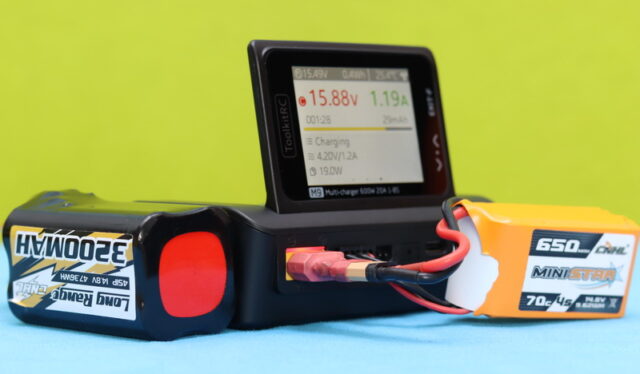

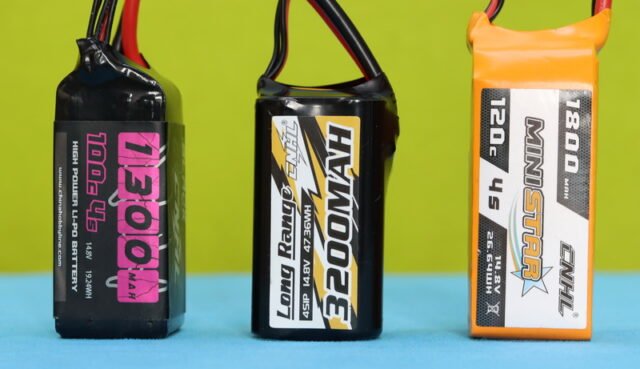
I found some really powerful and cheap batteries with great capabilities on eBay. Has anyone tried Molicel battery packs?
https://www.ebay.ie/itm/405045205232
I also bought two pieces of these batteries, but for the FPV monitor and not the drone. They are of decent quality for their price.
thanks for being honest about these LIION batteries, you saved me some money
Did you test any 4s/6s pack with 21700 Li-Ion cells? I read that they are better for long range FPV
I found one cheap on ebay, seller claims that is genuine 21700 cells battery
What’s the best voltage to stop flying with LIION packs?
Landing at 2.5v/cell would be safe